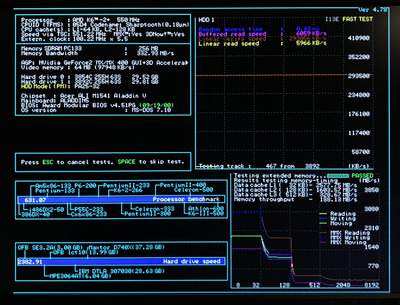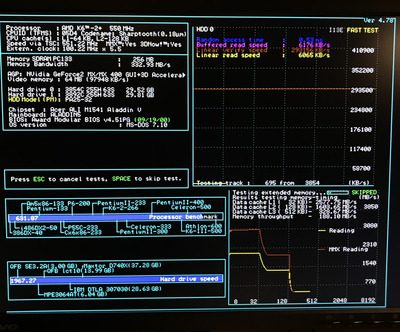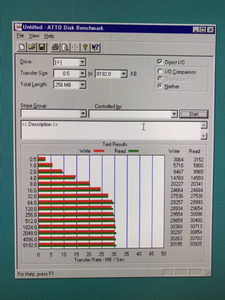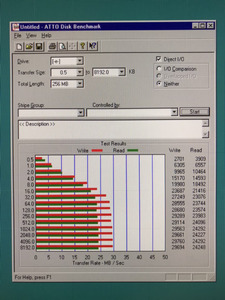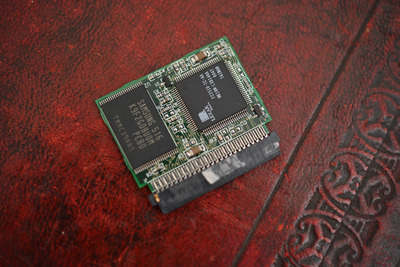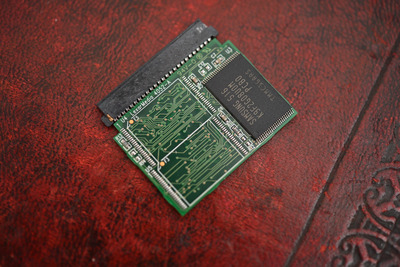First post, by ShovelKnight
I have been using a 32GB PATA SSD by Kingspec (PA25-32) for some time now, but for my next retro build Indecided to go the CompactFlash route simply to see if it's viable.
For this purpose, I bought a cheap CF-IDE adapter (which plugs directly into the port on the motherboard) and a SanDisk Extreme 32GB Compact Flash.
The PA25-32 SSD from Kingspec is an interesting device which is based on SiliconMotion SM2236 controller. According to the manufacturer's website, this controller is actually designed for fast CompactFlash cards (CF6.0): http://www.siliconmotion.com/A3.2_Partnumber_Detail.php?sn=6 The SSD uses MLC NAND.
SanDisk doesn't disclose what controllers and what type of NAND flash are used in their CF cards.
Since I have both devices on hand, I decided to compare their performance on my main retro machine with the following specs:
- CPU: AMD K6-II+ at 550 MHz
- Motherboard: GA-5AX rev. 4.1 (ALi Aladdin V), built-in IDE controller supports UDMA 33
- RAM: 384 MB running at 100 MHz
Both the SSD and the CF card were partitioned on my Linux box to ensure proper alignment. The SSD has been in use for about 6 months (mostly under DOS), the CF card has been in use for just 5 days which may or may not skew the results in its favour.
In DOS, both devices feel extremely snappy. I had no problems with copying files, running games etc. The time it takes to calculate the amount of free space is subjectively the same (instantaneous) for both devices.
Let's start with Speedsys.
CF card:
Random access time: 0.43ms
Linear read speed: 5966 KB/s
HDD score: 2382
SSD:
Random access time: 0.53ms
Linear read speed: 6065 KB/s
HDD score: 1967
ATTO Disk Benchmark under Windows 98.
CF card:
SSD:
I do apologize for the photos of the screen, but apparently the PrintScreen button on my NMB "Space Invaders" keyboard doesn't work 🙁
As we can see, the CF card is actually a bit faster than the SSD, especially when it comes to reading, although they both pretty much saturate the UDMA 33 controller in this PC. This difference in performance (or lack thereof) is only fair, since this Compact Flash card costs roughly the same as the SSD in question.
These results probably don't apply to more expensive SSDs and cheaper CF cards.
I also can't comment on belong term reliability of these storage devices, since I haven't used them long enough yet.
